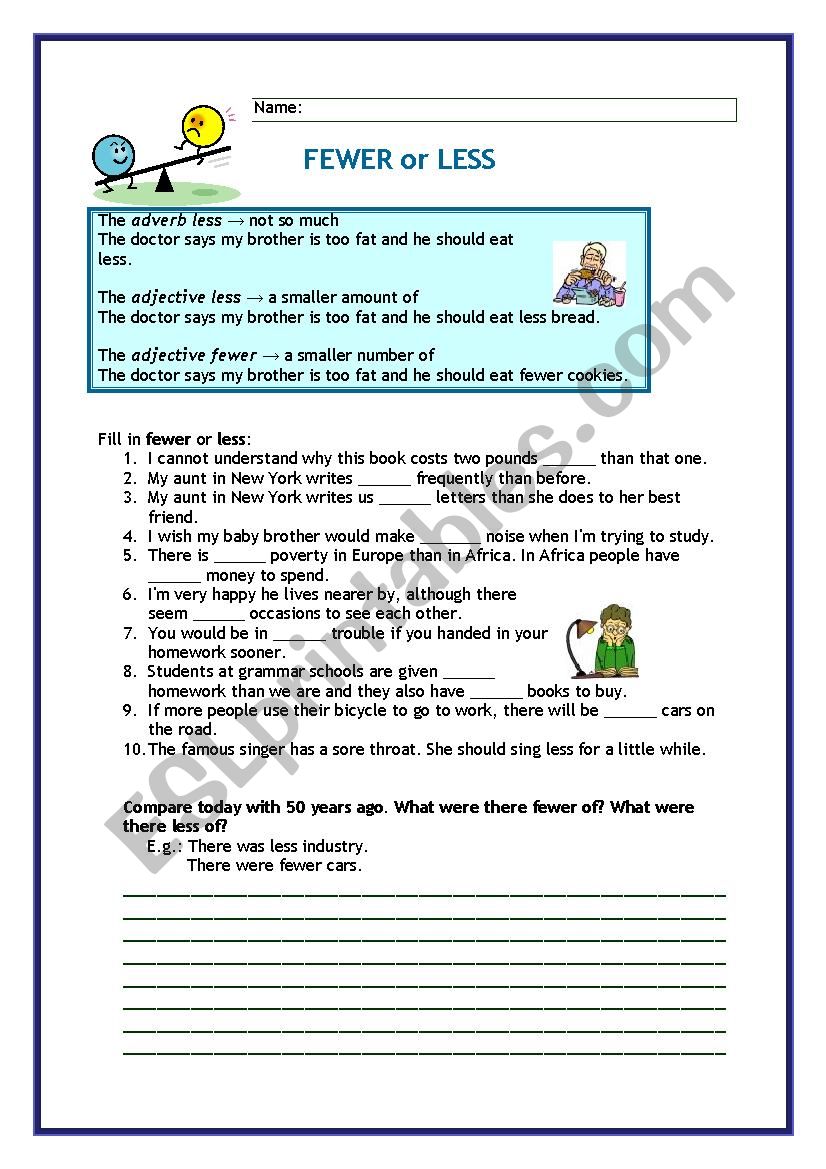
Mastering Quantifiers: The Indispensable Role of the Little Less Least Worksheet
In the intricate tapestry of the English language, quantifiers play a pivotal role in conveying precise meaning. Among these, the trio of "little," "less," and "least" often presents a unique challenge for learners, particularly due to their exclusive association with uncountable nouns and the common confusion with their countable counterparts, "few," "fewer," and "fewest." Understanding these distinctions is not merely an academic exercise; it’s fundamental to achieving clarity and accuracy in both written and spoken English. This article will delve into the nuances of "little," "less," and "least," explore common pitfalls, and highlight why a well-designed little less least worksheet is an indispensable tool for mastering these essential quantifiers.
Deconstructing "Little," "Less," and "Least"
At its core, "little," "less," and "least" form an irregular comparative and superlative series, all revolving around the concept of quantity for uncountable nouns.
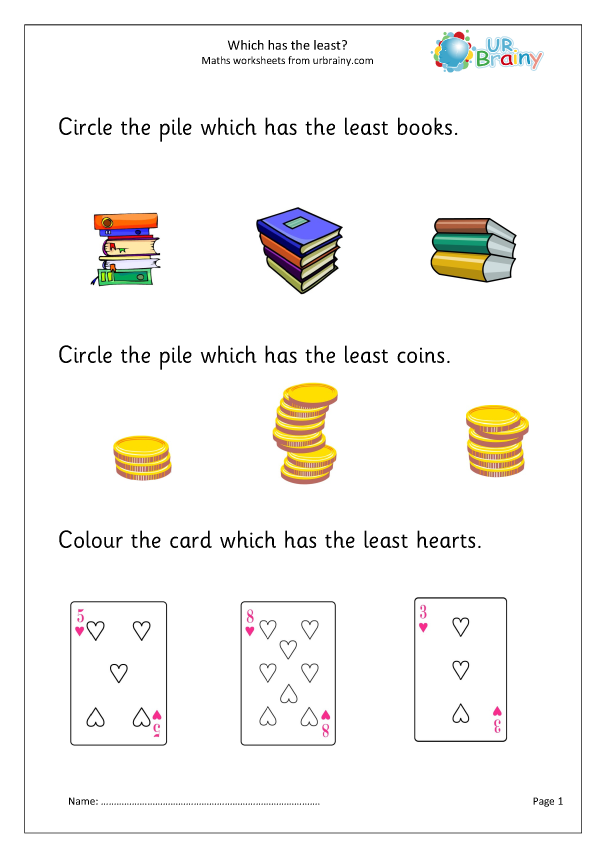
1. Little: The Base Quantity

"Little" serves as the base form, indicating a small or insufficient amount of an uncountable noun. It often carries a slightly negative or restrictive connotation, suggesting "not much" or "hardly any."

- Usage: Used with singular, uncountable nouns.
- Examples:
- "There’s little water left in the bottle." (Implies not enough water)
- "She has little patience for excuses." (Implies hardly any patience)
- "He showed little interest in the proposal." (Implies almost no interest)
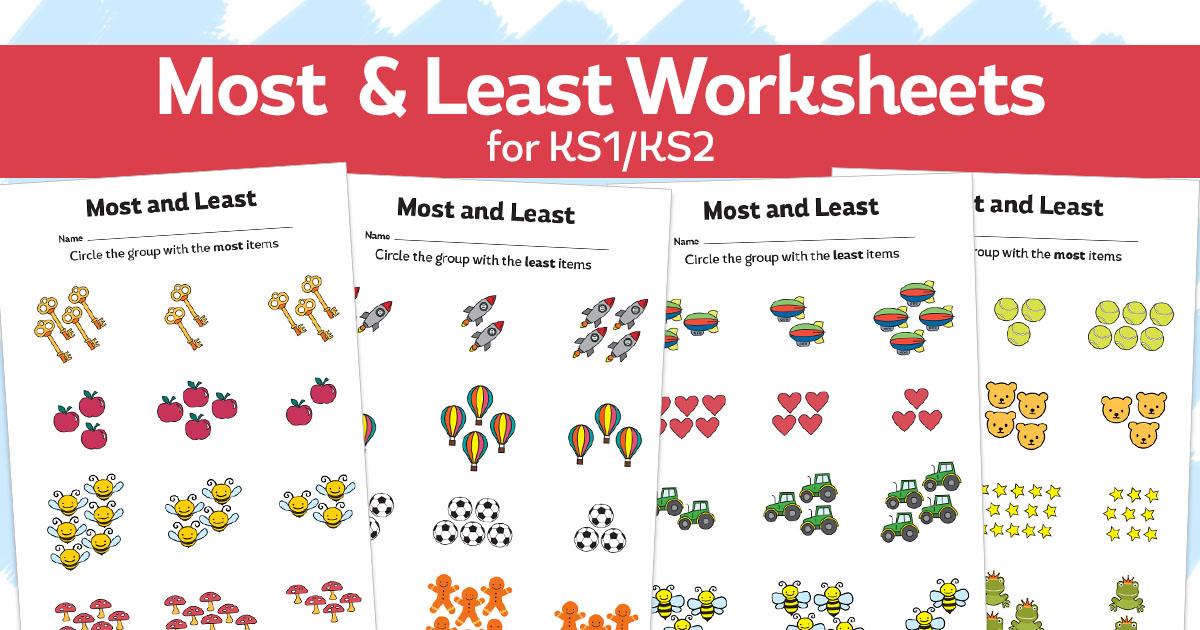
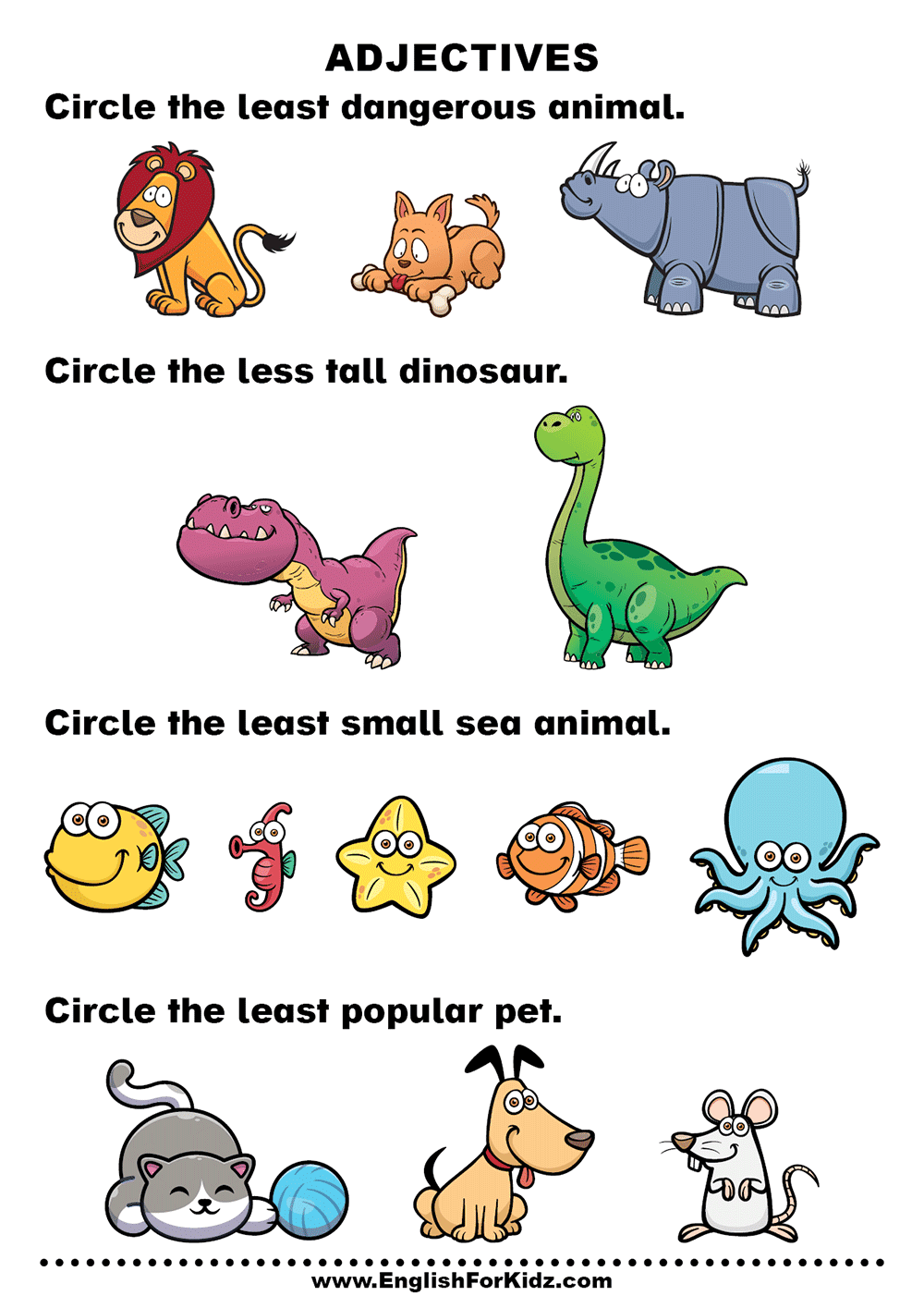
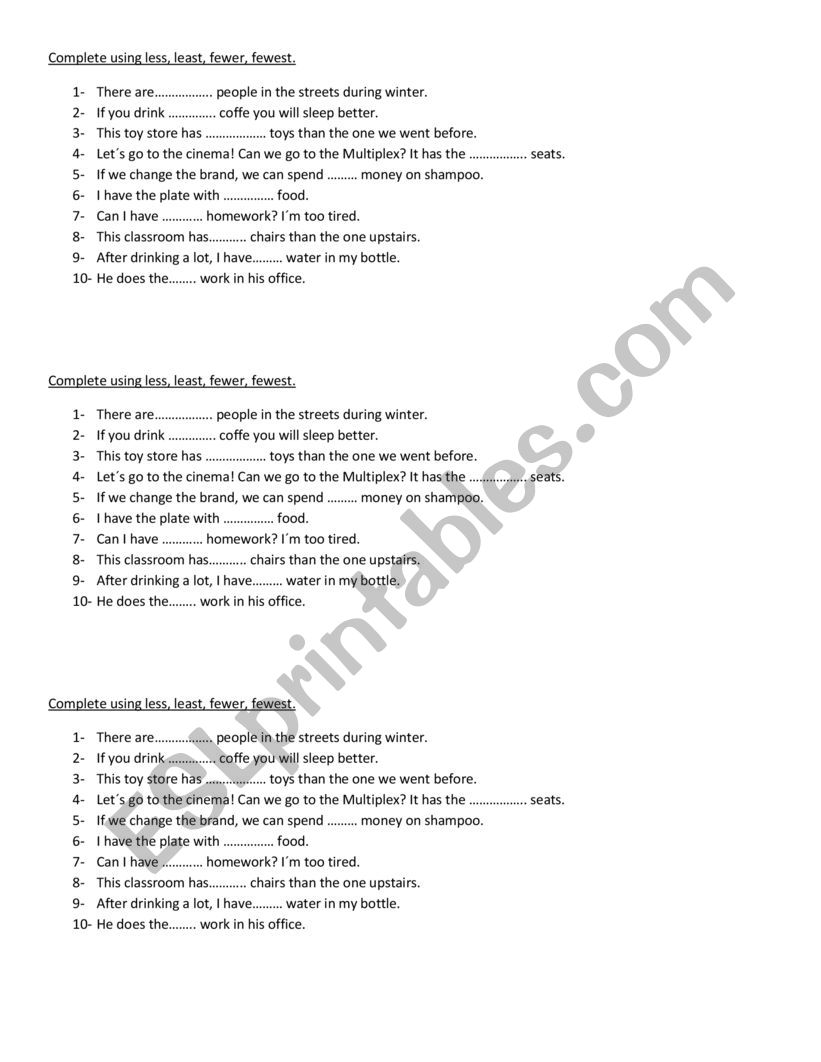

It’s crucial to distinguish "little" from "a little." While "little" suggests scarcity, "a little" implies a small but sufficient amount, often with a more positive connotation.
- "There’s a little water left, enough for a sip."
- "She has a little patience, so don’t push her too far."


This subtle difference in nuance is often a point of confusion that a good little less least worksheet can help clarify through contextual exercises.
2. Less: The Comparative Form
"Less" is the comparative form of "little," used to compare two quantities of uncountable nouns. It signifies a smaller amount when set against another.
- Usage: Used when comparing two items or groups, specifically with uncountable nouns.
- Examples:
- "I have less money than I did yesterday." (Comparing current money to yesterday’s money)
- "This recipe requires less sugar than the original." (Comparing the amount of sugar needed)
- "He spends less time on hobbies now." (Comparing current time spent to previous time spent)
The most notorious error associated with "less" is its misuse with countable nouns. Many speakers incorrectly say "less people" instead of "fewer people," or "less books" instead of "fewer books." This common mistake underscores the importance of rigorous practice. "Less" is strictly for uncountable nouns (e.g., water, information, advice, time, happiness, knowledge), while "fewer" is for countable nouns (e.g., cars, students, ideas, mistakes).
3. Least: The Superlative Form
"Least" is the superlative form of "little," indicating the smallest quantity among three or more items or groups of uncountable nouns. It signifies the absolute minimum.
- Usage: Used to indicate the minimum amount among several options, always with uncountable nouns.
- Examples:
- "Of all the options, this one offered the least risk." (Comparing risk among multiple options)
- "She requires the least amount of sleep among her friends." (Comparing sleep quantity among several people)
- "The success of the project depended on the least amount of intervention." (Indicating the minimum necessary intervention)
"Least" is also used in common phrases like "at least" (meaning no less than), "last but not least," and "to say the least."
The Uncountable Noun Connection: Why It Matters
The cornerstone of understanding "little," "less," and "least" lies in their unwavering connection to uncountable nouns. Uncountable nouns refer to things that cannot be counted individually, often concepts, substances, or collections (e.g., water, air, information, advice, furniture, luggage, bread, rice, sugar, time, money, happiness). They do not typically have a plural form and are used with singular verbs.
The confusion arises because English also has quantifiers for countable nouns: "few," "fewer," and "fewest."
- Few: A small number of countable nouns (e.g., "few students").
- Fewer: A comparative number of countable nouns (e.g., "fewer students than last year").
- Fewest: The smallest number of countable nouns (e.g., "the fewest students in the class").
The persistent "less vs. fewer" error is a direct result of failing to consistently differentiate between countable and uncountable nouns. Mastering this distinction is paramount, and it’s precisely where a dedicated little less least worksheet can provide targeted practice.
Common Pitfalls and How to Address Them
- Less vs. Fewer Confusion: As discussed, this is the most prevalent error. Learners must internalize the rule: "less" for uncountable, "fewer" for countable. Repeated exposure and error correction are key.
- Overlooking Connotation: The difference between "little" and "a little" is subtle but significant. Learners often use them interchangeably, altering the intended meaning.
- Lack of Context: Simply memorizing definitions isn’t enough. Learners need to see these quantifiers used in various real-world contexts to grasp their appropriate application.
- Irregularity: Because "little, less, least" is an irregular series (unlike "big, bigger, biggest"), it requires specific memorization and reinforcement.
The Indispensable Role of the Little Less Least Worksheet
Given the nuances and common pitfalls associated with "little," "less," and "least," a well-structured little less least worksheet becomes an invaluable educational resource. It provides a systematic and focused approach to mastering these quantifiers.
Why Worksheets Are Effective:
- Targeted Practice: Worksheets isolate the specific grammar point, allowing learners to concentrate solely on "little, less, least" without distraction.
- Active Learning: Filling in blanks, correcting errors, and transforming sentences requires active engagement, reinforcing understanding more effectively than passive listening or reading.
- Repetition and Reinforcement: Consistent practice through various exercise types helps solidify the rules in the learner’s mind.
- Immediate Feedback: Many worksheets come with answer keys, allowing learners to self-correct and understand their mistakes immediately, which is crucial for effective learning.
- Diagnostic Tool: For educators, worksheets can quickly identify areas where students are struggling, allowing for targeted re-teaching.
What Makes an Effective Little Less Least Worksheet:
- Clear Explanations: A brief, concise reminder of the rules at the top of the worksheet can be highly beneficial.
- Variety of Exercise Types:
- Fill-in-the-blanks: Simple sentences where learners choose "little," "less," or "least."
- Choose the correct word: Sentences with options like "(less/fewer) people" to directly address the common error.
- Sentence completion: Learners complete sentences using their own ideas, incorporating the quantifiers.
- Error correction: Identify and correct mistakes in sentences.
- Sentence transformation: Rewrite sentences using a different quantifier (e.g., change a "little" sentence to a "less" sentence).
- Contextual scenarios: Short paragraphs or dialogues where learners must apply the quantifiers naturally.
- Categorization: List nouns and have learners identify them as countable or uncountable.
- Gradual Difficulty: Start with simpler exercises and progressively introduce more complex scenarios.
- Contextualized Sentences: Avoid isolated phrases. Sentences should be meaningful and reflect real-world usage.
- Focus on Uncountable Nouns: Ensure the majority of exercises revolve around a diverse range of uncountable nouns.
- Answer Key: Essential for self-study and verification.
Beyond the Worksheet: Reinforcing Learning
While the little less least worksheet is a cornerstone, mastery requires a multi-faceted approach:
- Reading: Encourage learners to actively identify "little," "less," and "least" (and "few," "fewer," "fewest") in books, articles, and online content.
- Listening: Pay attention to how native speakers use these quantifiers in conversations, podcasts, and videos.
- Speaking Practice: Create opportunities for learners to use these quantifiers in their own sentences and conversations. Role-playing scenarios can be particularly effective.
- Writing Practice: Incorporate assignments that require the correct use of quantifiers, such as descriptive writing or comparative essays.
- Real-World Application: Challenge learners to describe quantities around them, both countable and uncountable, using the appropriate quantifiers.
Conclusion
The journey to English fluency is paved with mastering seemingly small grammatical distinctions that collectively build a strong foundation for clear communication. "Little," "less," and "least," though often challenging, are vital for accurately expressing quantity with uncountable nouns. By understanding their individual meanings, recognizing their exclusive link to uncountable nouns, and actively addressing common errors like the "less vs. fewer" mix-up, learners can significantly enhance their grammatical precision.
The little less least worksheet, when thoughtfully designed and effectively utilized, serves as an indispensable tool in this learning process. It provides the targeted, active, and repetitive practice necessary to solidify understanding and build confidence. Paired with broader exposure through reading, listening, speaking, and writing, the consistent effort invested in mastering these quantifiers will undoubtedly lead to greater fluency and accuracy in the English language.
